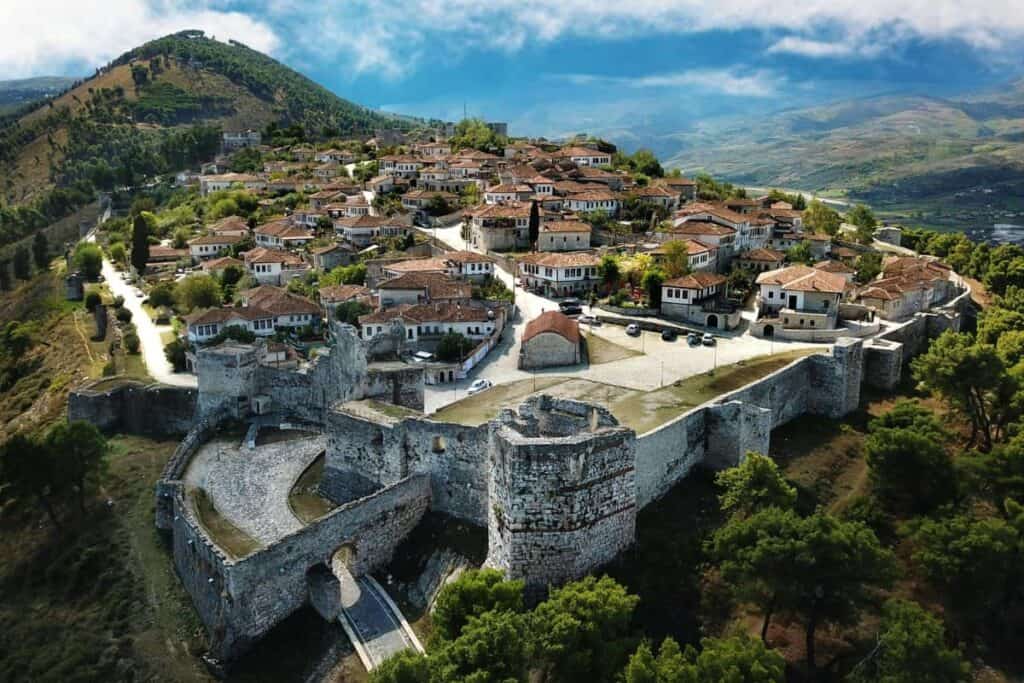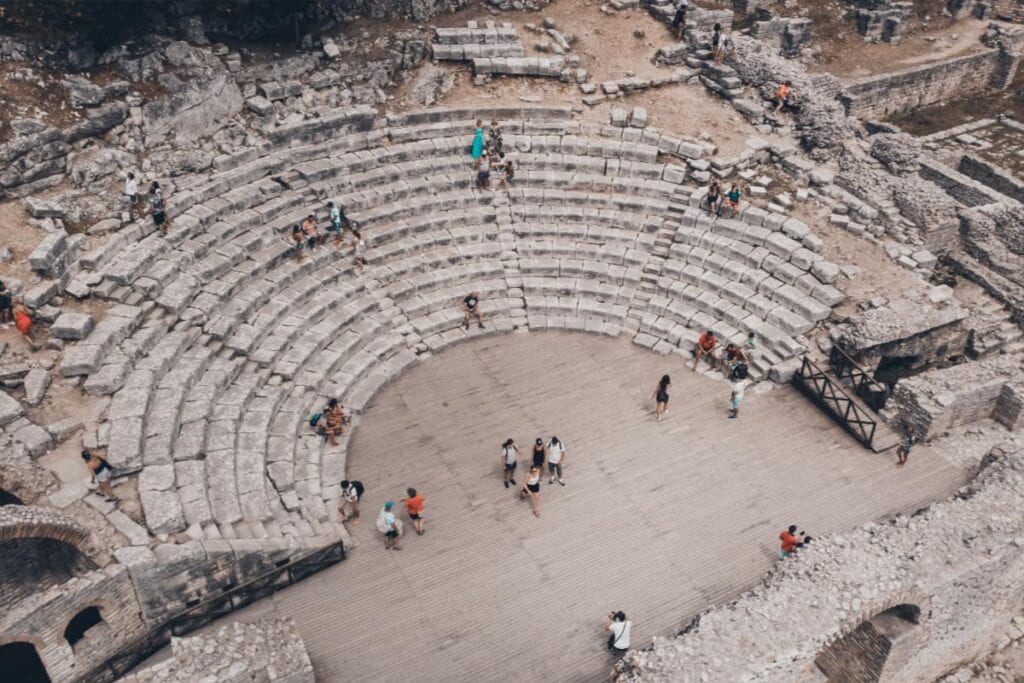Introduction
Albania is home to several UNESCO World Heritage Sites that highlight its rich history, cultural diversity, and stunning natural landscapes. From ancient cities to breathtaking national parks, these sites offer a glimpse into the country’s unique heritage. This guide takes you through the UNESCO Heritage Sites in Albania, detailing what makes each one special.
1. Butrint National Park
One of Albania’s most famous UNESCO sites, Butrint National Park, is an ancient city that dates back to the 8th century BC.
Highlights:
- The Amphitheater: A well-preserved Roman theater with panoramic views of the surrounding wetlands.
- The Basilica: Featuring intricate mosaics that tell stories of early Christianity.
- The Lion Gate: A defensive structure that showcases ancient engineering.
Why Visit: Butrint combines history with natural beauty, offering a serene and educational experience.
2. Gjirokastër: The City of Stone
Known for its distinctive Ottoman-era architecture, Gjirokastër is a living museum and a window into Albania’s past.
What to See:
- Gjirokastër Castle: Explore this hilltop fortress and its fascinating museum exhibits.
- Stone Houses: Walk through the city’s cobbled streets lined with traditional stone-roofed houses.
- Bazaar Street: Shop for handmade crafts and local goods.
Why It’s Unique: The city’s blend of history, culture, and breathtaking views makes it a must-visit destination.
3. Berat: The City of a Thousand Windows
Another UNESCO-listed gem, Berat is renowned for its Ottoman-era architecture and rich history.
Top Attractions:
- Berat Castle: Wander through this hilltop fortress, which is still inhabited.
- Onufri Museum: Marvel at religious icons and artifacts housed in a historic church.
- Mangalem and Gorica Quarters: Explore these picturesque neighborhoods divided by the Osum River.
Why Visit: Berat’s stunning architecture and peaceful atmosphere make it a perfect spot for history enthusiasts and photographers.
4. Ohrid Region and Lake Ohrid
Shared with North Macedonia, the Ohrid Region is a UNESCO site known for its cultural significance and natural beauty.
What to Do:
- Visit the Early Christian Basilica in Lin, a village on the Albanian side of the lake.
- Enjoy tranquil walks along the lake’s shores and take in its crystal-clear waters.
- Discover the unique flora and fauna that thrive in and around the lake.
Why It’s Special: The region offers a blend of historical exploration and serene nature.
5. Ancient and Primeval Beech Forests (Rrajca Forest)
Located in Shebenik-Jabllanicë National Park, the Rrajca Forest is part of a transnational UNESCO site that protects Europe’s ancient beech forests.
Why Visit:
- Hiking Trails: Explore well-marked trails through one of Europe’s oldest ecosystems.
- Biodiversity: Spot rare species of plants and animals that call this forest home.
- Serenity: The untouched nature provides a peaceful escape from modern life.
Tip: Visit during spring or early summer for lush greenery and mild weather.
6. The Iso-Polyphonic Music of Albania (Intangible Cultural Heritage)
Albania’s iso-polyphonic singing is recognized by UNESCO as an intangible cultural heritage. This traditional form of music, performed mainly in southern Albania, is deeply rooted in the country’s history.
Where to Experience It:
- Vlorë and Gjirokastër often host festivals and performances.
- Local villages in the south, where you can hear authentic renditions.
Why It’s Special: Iso-polyphony is a unique musical tradition that connects Albania’s past to its present.
7. Historic Centers of Berat and Gjirokastër
Both cities are UNESCO sites, and their historic centers are architectural masterpieces that offer a glimpse into life during the Ottoman era.
What to Explore:
- Traditional Houses: Visit preserved homes that showcase Albanian craftsmanship.
- Museums: Learn about the history and culture of each city through its museums and landmarks.
Why Visit: The combination of history, architecture, and cultural heritage makes these centers unforgettable.
Tips for Visiting UNESCO Sites in Albania
- Take Guided Tours: Local guides provide deeper insights into the history and significance of each site.
- Visit in Off-Peak Seasons: Enjoy fewer crowds and cooler weather by traveling in spring or autumn.
- Respect the Sites: Follow any rules or guidelines to help preserve these treasures for future generations.
Why UNESCO Sites Matter in Albania
Albania’s UNESCO sites are more than just attractions—they’re a testament to the country’s rich cultural heritage and natural beauty. Visiting these sites offers a deeper understanding of Albania’s history, traditions, and the importance of preserving these landmarks.
Conclusion
From the ancient ruins of Butrint to the stone cities of Berat and Gjirokastër, Albania’s UNESCO World Heritage Sites provide unforgettable experiences. Start planning your journey through these remarkable destinations and immerse yourself in the stories and landscapes that make Albania unique.


